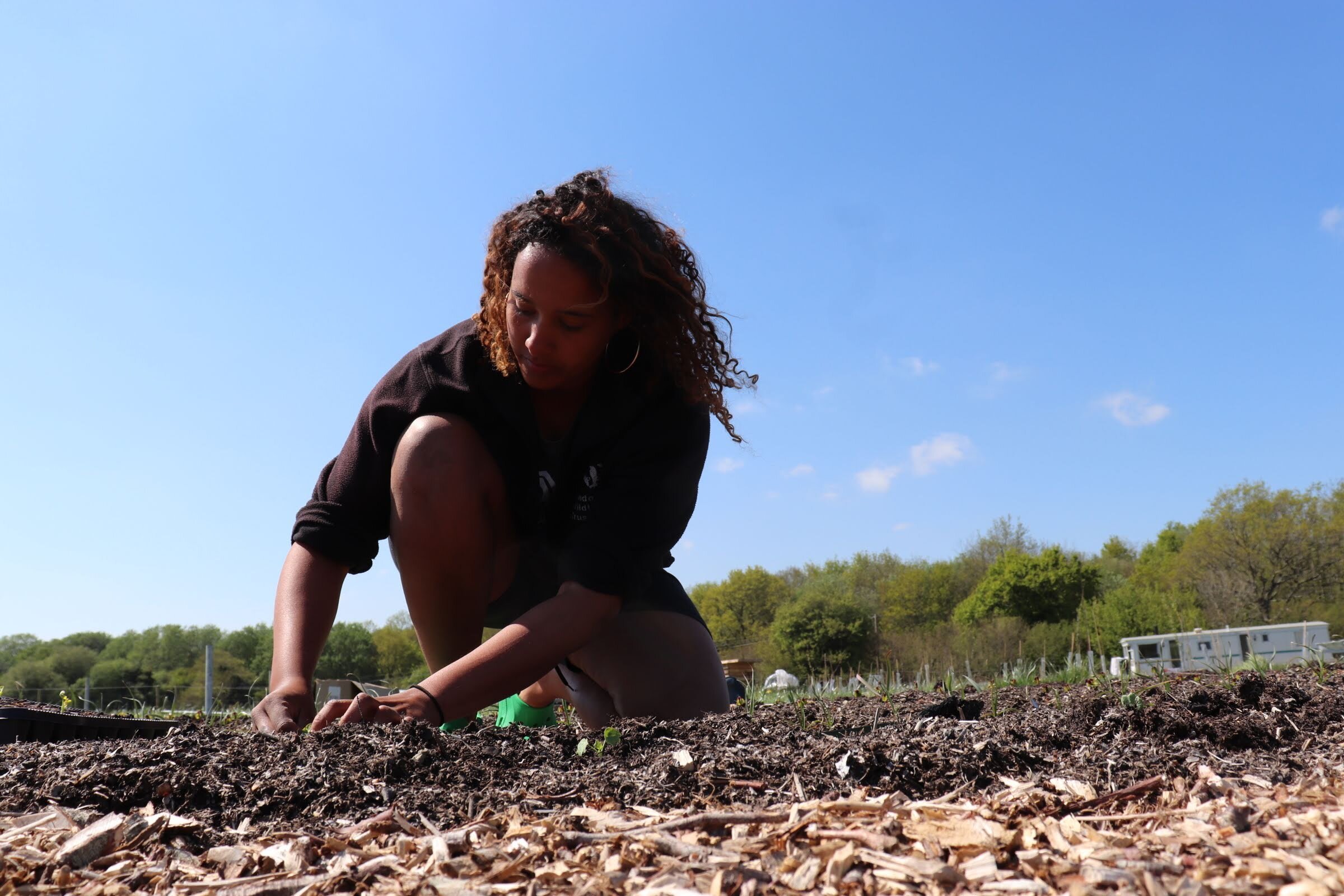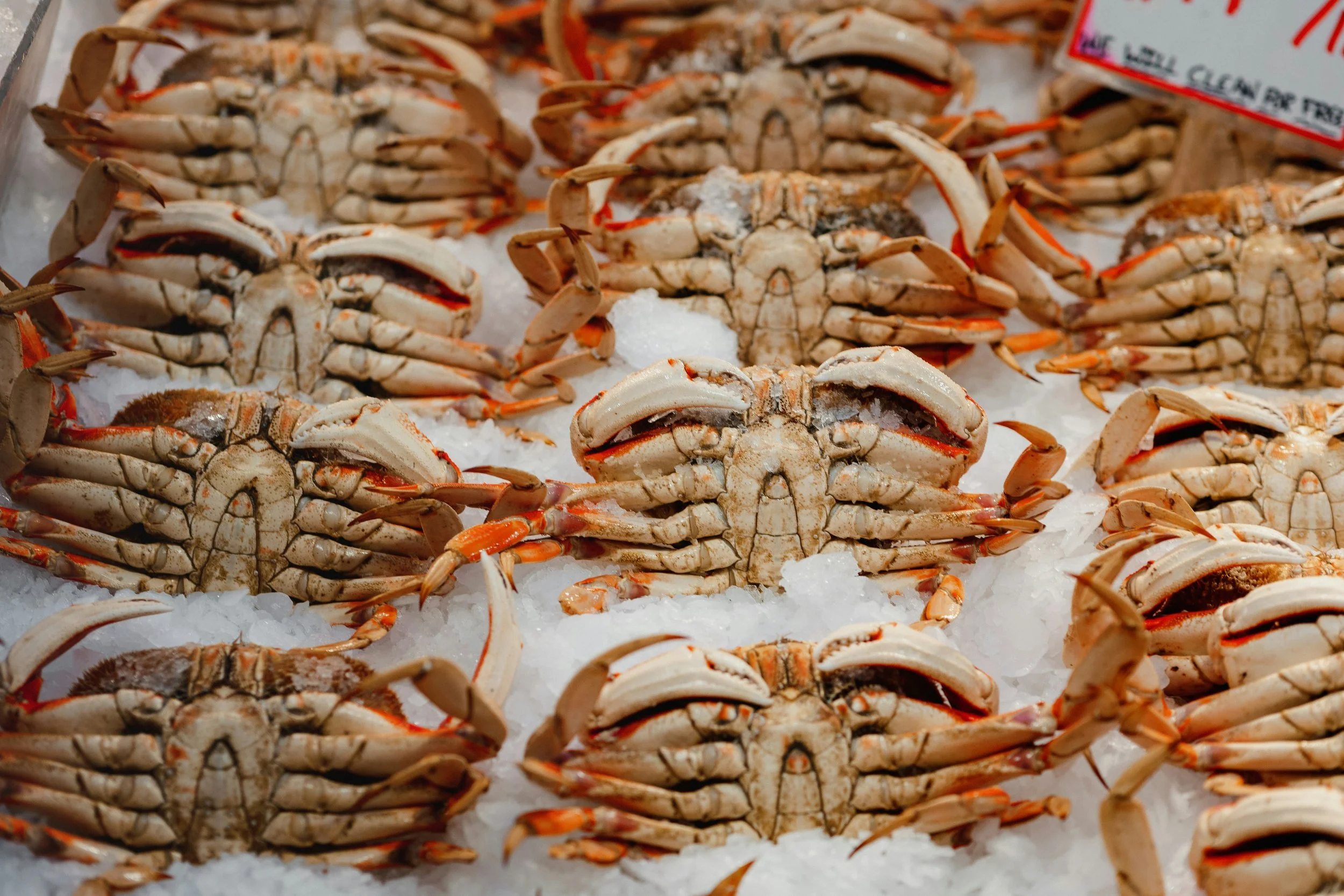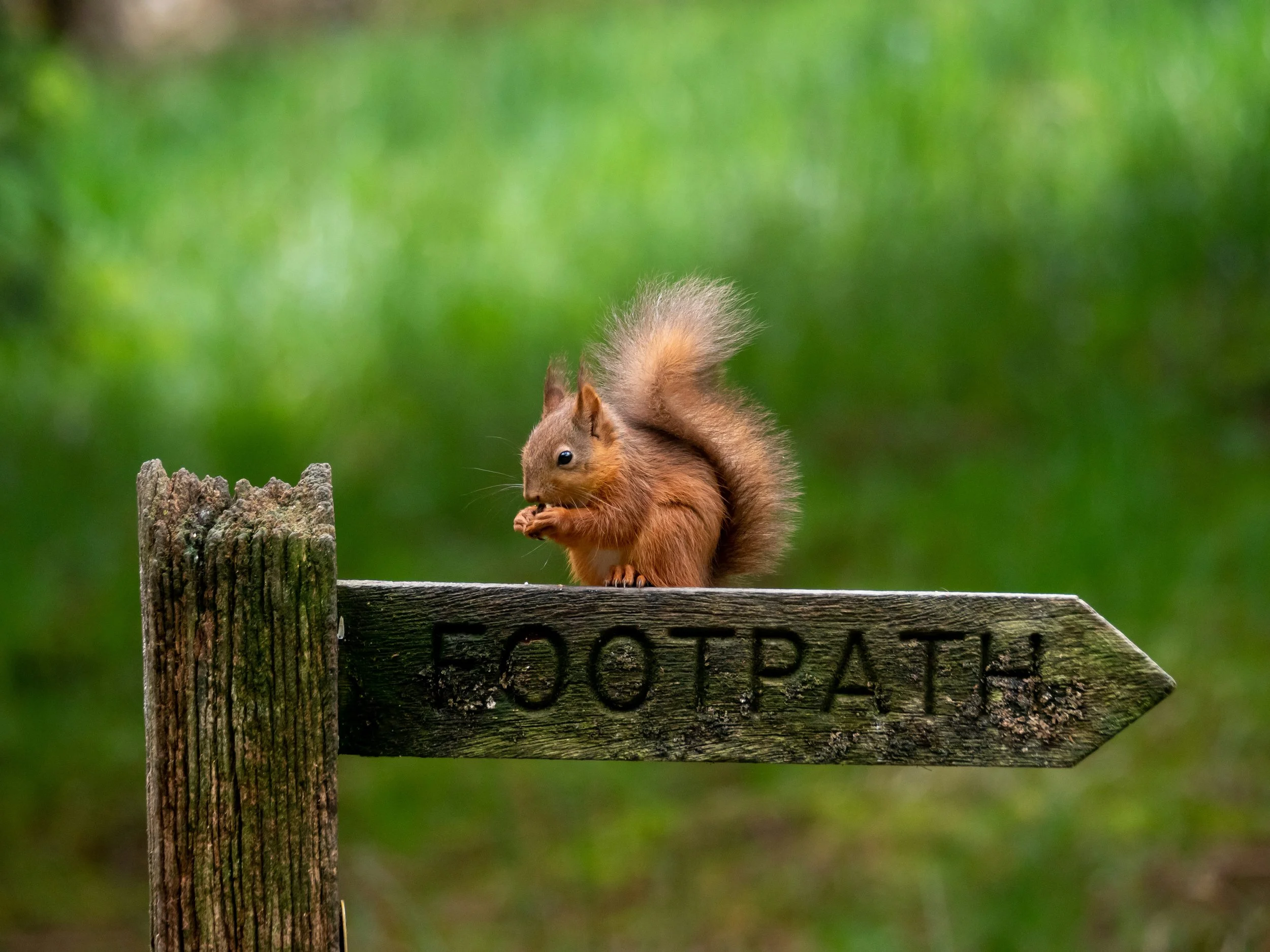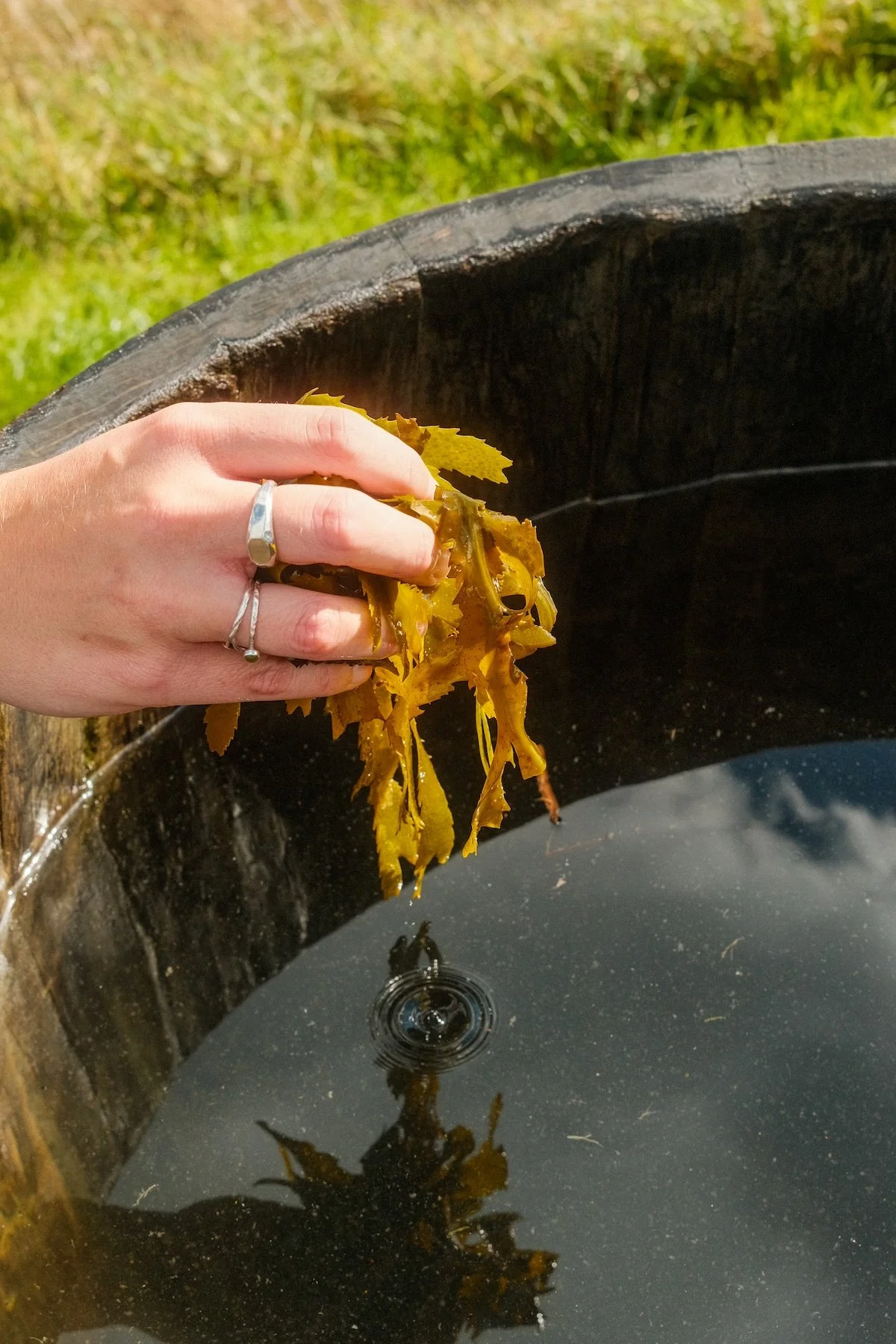Regenerative Farming and Giving Back to Nature.
INTERVIEW BY JIMMY SANDISONAt the end of last year, Sinead and Adam bought four and a half acres of land in the Sussex countryside, with the aim to create a smallholding brimming with biodiversity. They called it Aweside Farm.
The land had been under conventional arable production for 30 years, with a continuous maize crop which had left the soil compact and lifeless. But, since planting hedgerows and trees, and taking an organic, no-dig approach, slowly the land will return to a thriving and healthy habitat.
With new perspectives, fresh ideas and enthusiasm, Sinead and Adam are regenerating the land, restoring what has been lost in order to benefit our future.
Image: Aweside Farm“Regenerative farming is helping wildlife get back to the place that it should be, from which we have pushed it out.”
Some Good Ideas: Hi Sinead and Adam, could you tell us a little about your journey to Aweside farm? What were you doing before this?
Sinead at Aweside Farm: Before moving to Aweside Farm we were working on a small organic growing project in East London called Audacious Veg. I started volunteering there in 2018, doing some IT stuff for them and tech bits. Then the opportunity came around to take on the whole project, the team were moving on, the land was just going to be left, and so we thought -with no growing experience whatsoever- that we would have a crack at it, see if we could do a bit of growing.
At first, it was just what we were doing on weekends or in the evenings; we started posting produce online and chefs began to get in touch with us. We started working with Foodchain who connected us to more restaurants and chefs, and we began to think, “gosh maybe we could actually make a business out of this and not have to work in office jobs that we don’t like anymore”.
Image: Aweside FarmSGI: When did you move to Aweside Farm?
Sinead at Aweside Farm: We got the lease for the land in late November 2019 and we started work here in January 2020. We were coming back and forth and staying in the caravan for a few days at a time. Then we moved here officially just days before lockdown. We had a mad dash to leave everything and get here!
Image: Aweside FarmSGI: How much larger is Aweside Farm, compared to your first site and has the scale-up been intimidating?
Sinead at Aweside Farm: We were on 0.1 acres and now we’re on 4.5, so in terms of a scale-up it is quite a bit bigger. But the way that the old site was set up, it was so messy, it would take us ages to do a harvest because we’d be going from one part of the site, then further away through loads of trees to get to the next part. Then into a different corner of the entire plot. So, in terms of efficiency, we’re so much more efficient here because the beds and everything is laid out.
Image: Aweside FarmSGI: Designed and planned from scratch to have the most efficient harvest?
Sinead at Aweside Farm: Yeah, so things make a little bit more sense, easy production. But, I mean, it’s still quite an overwhelming space on the grand scheme. We’re using a tiny portion of that four and a half acres, but a lot of the land will be covered in trees which we’re planting and will just let nature do its thing.
Image: Aweside FarmSGI: Speaking of overwhelming, here’s a big question for you, what is ecological and regenerative farming and why is it important?
Sinead at Aweside Farm: I guess ecological farming is working with nature, not imposing what we think we need to get out of the ground but are working with it, to nurture it. To nurture biodiversity, nurture the soil and life underneath. Not exploiting things and not pushing things to the limit.
Then regeneration is going into places as we have here: we’re a small part of 20 acres of fields that have just been maize crops for the past 30 years. The soil is really compact, there’s little to no organic matter in the soil, that has a huge range of implications, especially to do with carbon absorption. Soil is the biggest carbon absorber; people generally think its tees but that is a misconception. So that is a part of regeneration, regenerate the soil, put back what we have let go into the atmosphere.
Regenerative farming is helping wildlife get back to the place that it should be, from which we have pushed it out, in terms of biodiversity.
And socially as well, the countryside and access to growing are often only available to a very small demographic of people, so it’s about trying to regenerate that and get people from all walks of life to know that they are welcome in these places, they do belong in these places and they can grow.
Image: Aweside FarmSGI: That’s really interesting. Thank you. Can you explain some of the steps you take in order to benefit the soil?
Sinead at Aweside Farm: We are a no-dig farm, so we put compost on top of the ground and we slowly let the life underneath bring it into the ground and condition it. It’s a long process, we could just get a soil rotavator and just dig it all up. But our field has been grass for the last three years and while the soil is still not great, it would have done something in terms of putting a bit of life back into it and creating organic matter. So we didn’t want to undo the work that had already been done.
In the past, the field would have just been flail mowed, but on our portion, we’re letting it run through a cycle. We’ll let it grow freely for a year, let the weeds grow and then let it naturally die back in the Winter. That is important, so when we come back to it next year there’s going to be loads of organic matter that will have re-entered the soil.
Then trees, we’ve done a huge amount of tree planting so far, about 2400 trees and another 2000 to go in in December. We’re putting in an acre and a half woodland and another hedgerow which will be 200 metres long. Tree roots run incredibly deep and far, they will help loosen up the soil over time. But it is a slow process. It’s not something that we’re going to see the benefits of for a really long time.
“If you only have one group of people growing in the same way, bouncing off each other in an echo chamber, saying that ‘what we're doing is great and the conventional way is perfect’, nothing will progress.”
SGI: Why is it important to celebrate variety?
Sinead at Aweside Farm: We’ve seen what monocultures do, right? I think there’s a real misconception when you go to the countryside and you’re in fields of just brown or green, people romanticise the Great British countryside. But what you’re looking at is destruction and devastation, if you listen in these places, you don’t really hear any birds. You won’t hear any bees, you won’t hear crickets, you just don’t hear life. We’ve come to a strange place where that silence is celebrated. That is a really sad thing because silence shows life isn’t thriving. That’s what happens when you plant one thing for 100s of acres and then plough it with lots of chemicals. We’ve seen what that has done in terms of flooding and water quality and the nutritional consequences of foods.
And then it also trickles into society as well. If you only have one group of people growing in the same way, bouncing off each other in an echo chamber, saying that “what we’re doing is great and the conventional way is perfect”, nothing will progress.
This is what has got us into the situation that we are in because we haven’t got any new talent coming in from difference industries, from different backgrounds, different classes. Without variety and without diversity, we deprive ourselves of so much learning.
Image: Aweside Farm
SGI: Do you feel it’s important to often re-evaluate your methods?
Sinead at Aweside Farm: Yeah, absolutely. Otherwise, you fall into the trap of what many people have done, right? Like, “Oh, I’m doing it this way because my grandparents did it or because my parents did it”. That’s not really good enough.
We need to be looking back frequently, seeing what works, what doesn’t work.
“Without variety and without diversity, we deprive ourselves of so much learning.”
SGI: I think that’s also a part of what regenerative farming is. Its constant evaluation, changing and evolving with what works with nature.
Sinead/Aweside Farm: Yes, regeneration is looking at what’s missing, what’s not working, and what can we do to fix anything?
Image: Aweside FarmSGI: Have there been any good books that have helped you with your learning?
Sinead at Aweside Farm: ‘Growing a Revolution’ by David Montgomery.
I studied as a geologist before doing various jobs in food, and David Montgomery is a geologist who has fallen in love with food and farming. Reading it I was like, “gosh this guy has just written my brain”.
It is a really nice positive environmental book. So often environmental writing just goes through was is dying and what is wrong. But in ‘Growing a Revolution’, he describes what is wrong, but also sees ways in which we can fix things and how quickly we can fix them. That’s one of the great things about that book, it shows how fast regenerative farming practices can make a change. And that it’s not as hard as you think.
And then another book is, ‘The Hidden Life of Trees’ by Peter Wohlleben.
It is a beautiful story of how trees have characters. It’s about the connections that trees build with one another. It really brings to life something that we often just overlook and forget is truly living.
Image: Aweside FarmSGI: Thanks Sinead, lastly, do you have any advice for someone wanting to get into organic growing?
Sinead at Aweside Farm: I’d say allotment sites are probably the best places to learn because there are so many different people growing in different ways on tiny plots.
Generally, most people are growing organically. You can ask questions, we used to do that when we started in London. We walked around, asking, “What’s that? What’s that?”. Allotments are really underrated places, but I think they’re amazing spaces for learning, practical learning.
Sometimes people get quite bogged down with books and theory, that’s one form of learning, but actually getting some hands-on experience, doing it for yourself and seeing what works for you, and not doing it quite so by the books is probably the best thing you can do. Which I think is why I like the books that tell a story, rather than gardening textbooks which will tell you X, Y and Z.
That is the beauty of growing, it’s really creative.





















